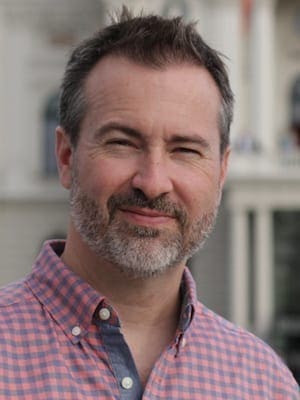“Islam in America” doesn’t get distracted by the deep-seated fear and hatred that exists between the United States and other parts of the world. No–“Islam in America” is about another Abrahamic faith community on these shores.
“Islam in America” doesn’t get distracted by the deep-seated fear and hatred that exists between the United States and other parts of the world. No–“Islam in America” is about another Abrahamic faith community on these shores.
Hosted by former BBC reporter Rageh Omaar, “Islam in America” is marked not only by its high production values—which translate even across the Internet—but also by the varied and unique nature of the American Muslims that Omaar visits and questions: a Baptist-turned-Muslim in Texas; Somali Muslims in Minnesota; Muslim rappers in New Jersey; a Palestinian Muslim in Arkansas helping his Jewish friends build a synagogue; and so many more.
Omaar doesn’t ignore the tension between America and Islam. Mention those two words—Islam and America—he says, and “most people think of irreconcilable conflict.” But Omaar shows that while Islam and America may be divided around the world, they share much in the United States. Omaar travels by train, plain and automobile, taking in much of the American landscape and making the program a faith-quest travelogue of sorts. It works.
“Islam in America” is mainly a story of specifics—that is, a program that unearths for us the amazing diversity within the American Muslim community. If Omaar makes a grand claim about Islam in America, it’s this: The Muslim community appreciates and respects the First Amendment to the U.S. Constitution.
As Omaar travels, appearing on camera and providing helpful narration, he takes care to point out any signs of respect for Islam embedded in this country’s bedrock. So he points out a frieze in the U.S. Supreme Court building showing Muhammad, and a Muslim depicted in a dome mural in the Library of Congress, and Thomas Jefferson’s personal copy of the Quran.
Omaar begins his journey in part one, “The American Crescent,” by stopping in Minnesota, where he meets Rep. Keith Ellison, the first Muslim elected to Congress. Ellison points out that in order to win, he had to secure the votes of both Christians and Jews. “There’s enough for everybody,” says Ellison, referring to groups that were previously on America’s margins now coming to the table of power.
Omaar heads down the Mississippi River to Jackson, Miss., to meet with descendants of slaves. Omaar says he is prejudiced about the South, but he finds not only a vibrant mosque in Jackson, but also the International Museum of Muslim Cultures and its founder, Okolo Rashid.
Omaar follows the story of the Nation of Islam for a brief time, from its growth under Elijah Muhammad, through its more well-known figures like Malcolm X and Muhammad Ali, to Louis Farrakhan. “Today the nation’s membership is small, its rituals border on idolatry and its message is barely recognizable to most Muslims,” concludes Omaar, who also interviewed Elijah Muhammad’s son, Wallace Deen, before he died.
In part two, “Islamic Stars and Stripes,” Omaar travels to New York to revisit the moment most Americans now associate with Islam. He interviews a Muslim member of the New York Fire Department who was there on Sept. 11, and he catches up with James Yee, a Chinese-American who converted to lslam and became a Muslim chaplain at Guantanamo Bay. The story turns to Yee’s own sad story and how American Muslims have championed democracy, justice and the legal system. Nevertheless, a U.S. Army Muslim that Omaar had planned to interview ultimately decides not to be interviewed on camera out of fear, saying some of his fellow Muslims think he’s a traitor by serving in the army.
One of the biggest themes to emerge in the series concerns the influence of Muslim women in the United States. Omaar hears this from several interviewees, leading him to look briefly at a recent translation of the Quran by scholar Laleh Bakhtiar that offers a different, more progressive take on a verse about husbands and wives. This translation, Omaar points out, was sanctioned by the Islamic Society of North America.
“Islam in America” is eye-opening and would be one of the better ways for American Christians, certainly, to spend their time among moving pictures. It would have been helpful for the producers to identify the interviewees onscreen, but that is a minor criticism.
The program is aptly named: It’s about Islam in America, meaning it doesn’t get distracted by the deep-seated fear and hatred that exists between the United States and other parts of the world. No—”Islam in America” is about another Abrahamic faith community on these shores. When Omaar asks a cab driver in Minnesota if he can be both Muslim and American, the man nods. “You have to be American first,” he says, adding that he’d give his life to defend the country.
Not every interviewee responds that way, which brings up this question: How would Christians respond to the same query? All Americans practice a civil religion, argues Omaar—even American Muslims. And in the end, he says, peace, tolerance, justice, equality and freedom are not only American ideals, but Islamic ones as well.
Cliff Vaughn is managing editor for EthicsDaily.com.

